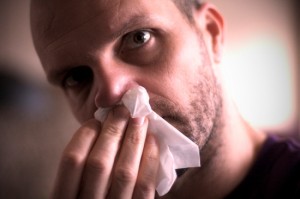What are Delirium Tremens?
Delirium tremens or DT’s for short are a severe and possibly fatal form of alcohol withdrawal. Delirium tremens involve sudden and severe mental or nervous system changes. Anyone who has ever seen someone experience delirium tremens knows how frightening and scary they can be.
Delirium tremens don’t only happen to someone who is withdrawing from alcohol but this is when they are most common. Delirium tremens can occur due to head injury, infection, and illness too. Delirium tremens due to alcohol withdrawal though are probably the most severe.
When someone becomes physically addicted to alcohol they change the physical make-up of their brain. Then when they try to stop drinking the brain is no longer getting what it needs to take care of the body and that is when alcohol withdrawal begins.
Alcohol withdrawal symptoms usually begin within 72 hours of the last drink and can last up to 10 days after that. Alcohol withdrawal symptoms once they begin can quickly become more severe and worsen.
- Body tremors
- Changes in mental function
- Agitation, irritability
- Confusion, disorientation
- Decreased attention span
- Deep sleep that lasts for a day or longer
- Delirium
- Excitement
- Fear
- Hallucinations (seeing or feeling things that are not really there)
- Increased activity
- Quick mood changes
- Restlessness, excitement
- Sensitivity to light, sound, touch
- Stupor, sleepiness, fatigue
- Seizures
Most common in first 12 – 48 hours after last drink
- Usually generalized tonic-clonic seizures
- Symptoms of alcohol withdrawal
- Anxiety
- Depression
- Difficulty thinking clearly
- Fatigue
- Feeling jumpy or nervous
- Feeling shaky
- Headache
- Insomnia (difficulty falling and staying asleep)
- Irritability or excitability
- Loss of appetite
- Nausea
- Pale skin
- Palpitations (sensation of feeling the heart beat)
- Rapid emotional changes
- Sweating, especially on the palms of the hands or the face
- Vomiting
Other symptoms that may occur:
- •Chest pain
- •Fever
- •Stomach pain
And delirium tremens. Delirium tremens are a medical emergency and are one of the biggest reasons why someone who is experiencing alcohol withdrawal should seek outside help immediately if they begin experiencing any of the alcohol withdrawal symptoms mentioned above. Delirium tremens look a lot like seizures and the usual treatment for them includes the same medications that would be used to help seizures. For instance, valium, Ativan and diazepam are quite common for the treatment of delirium tremens and alcohol withdrawal in general.
Someone who is getting ready to experience delirium tremens will usually show some signs such as the following:
•Heavy sweating
•Increased startle reflex
•Irregular heartbeat
•Problems with eye muscle movement
•Rapid heart rate
•Rapid muscle tremors
The most important thing about delirium tremens is that they can be fatal. This is why it is so absolutely imperative that anyone experiencing any level of severity of alcohol withdrawal should check into an inpatient detox facility or go to the hospital. For someone who is going through the alcohol withdrawal themselves they won’t be able to help themselves should they begin to experience delirium tremens. Delirium tremens also for the person who is not medically equipped can be extremely scary. So if you begin to experience any type of alcohol withdrawal seek medical attention immediately.



